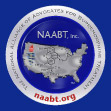|
The American Society of Addiction Medicine – ASAM –
held its 37th Annual Medical-Scientific Conference May 4-7.
The 30-patient restriction was one of the topics of discussion.
Dr. H. Westley Clark, Director of CSAT/SAMHSA stated he was “in favor of a
balance”. It appeared that he was not for total abolishment of the limit, as were many
of the other attendees. He cited the fear that opioid-naïve people could become
dependent on diverted buprenorphine. Someone from the audience pointed out that
due to the cost of buprenorphine, the limited agonist effect, and the availability of
stronger opioids on the streets, Buprenorphine would rarely end up the “best choice”
for anyone intent on misuse, and thus would unlikely become a significant problem.
Denise Curry from the DEA seemed to support this theory with, “We have not seen
diversion of buprenorphine for the most part” and implied that the DEA was aware of
the limited risk to public health posed by any possible buprenorphine diversion, in
comparison to the more dangerous diverted opioids.
Dr. Clark also mentioned the reason for the limit in the first place which was in
response to a “fear that doctor’s offices could become methadone-like clinics”, and as
an attempt to limit diversion by limiting supply. Several physicians noted that an
unintended consequence of the restriction is diversion. People in need cannot find a
legal source and are getting what they can off the street, yet still using it as it was
intended; to stop illicit drug use.
The vast majority of the people who spoke, favored removing the limit and urged
their colleagues to write to Congress and urge their support of this new legislation to “end this nonsense” and leave medical decision-making to the doctors.
Dr. Mark Kraus from Connecticut delivered an especially passionate statement,
which served as a consensus of the majority of experts he polled on the issue. Below
is his statement in its entirety:
“The 30 rule provision of DATA-2000 is arbitrary and capricious for several reasons
including the following:
- It is in contravention of the public policy inherent in DATA-2000 to provide new access
for opiate dependent patients in office based settings;
- It undermines an effective delivery of medical care and treatment for those the statute
is designed to benefit - the opiate dependent patient; and
- It arbitrarily carves out a group for treatment necessarily depriving others equally in
need of treatment from obtaining treatment. This constitutes de facto rationing of
care without any basis.
As an internist, I am not restricted by an arbitrary number on how many diabetic, cardiac,
hypertensive, pulmonary, or GI patients I can treat.
As an addiction medicine specialist working as a methadone treatment provider,
I am not limited to an arbitrary number of opiate dependent patients I can treat with
methadone. Yet there is an arbitrary number of opiate dependent patients I can treat with
Suboxone. This is totally irrational - makes no sense! Government’s foray into this area
of medicine has created more problems, more issues. If Government’s major purpose
was/is to prevent diversion, rationing of care is not reasonably related to hat goal.
Common sense dictates that trained addiction medicine specialists be permitted
to treat opiate dependent patients with Suboxone without arbitrary restriction by
numbers. No other FDA-approved medication has an arbitrary limit as to the number
of patients a physician is allowed to treat. The 30-rule rationing of care/treatment
ignores the evidence and hurts the patients it was designed to benefit.
The 30 rule cannot stand!“
Arlene Stanton, Ph.D. Task Order Officer, CSAT, provided a comprehensive
presentation on the results of the Evaluation of the Buprenorphine Waiver program.
Final Results of SAMHSA evaluation concluded, among other things; that the 30-patient
limit may be decreasing potential access to treatment. Due to the 30-limit, managed care
network managers have reported difficulty finding physicians with open treatment slots.
They also reported encountering physicians’ preference for detox instead of maintenance,
despite clear evidence longer treatments have higher success rates. Comments provided
by respondents to the wavered physicians’ survey included the following:
- “It is a crime and unethical to continue to deny access to so many patients. Can you in good conscience not open up access to this life-saving treatment to thousands?”
- “I don’t know any surgeons who limit appendectomies.”
- “I no longer can offer maintenance therapy thus I have high relapse rates. The government is committing malpractice with this limit.”
- “Until buprenorphine is treated like any other prescription with no additional
constraints placed on doctors, both doctors and patients will continue to stigmatize
this area of medical care.”
- “It is unconscionable to turn patients away because of some ureaucratic limits.”
DATA-2000 has a provision so that the Secretary of HHS, by regulatory change,
can eliminate or change the limit independent of Congress. It’s hoped that the data
in this final report will be the catalyst of such change. The need is clear. |







